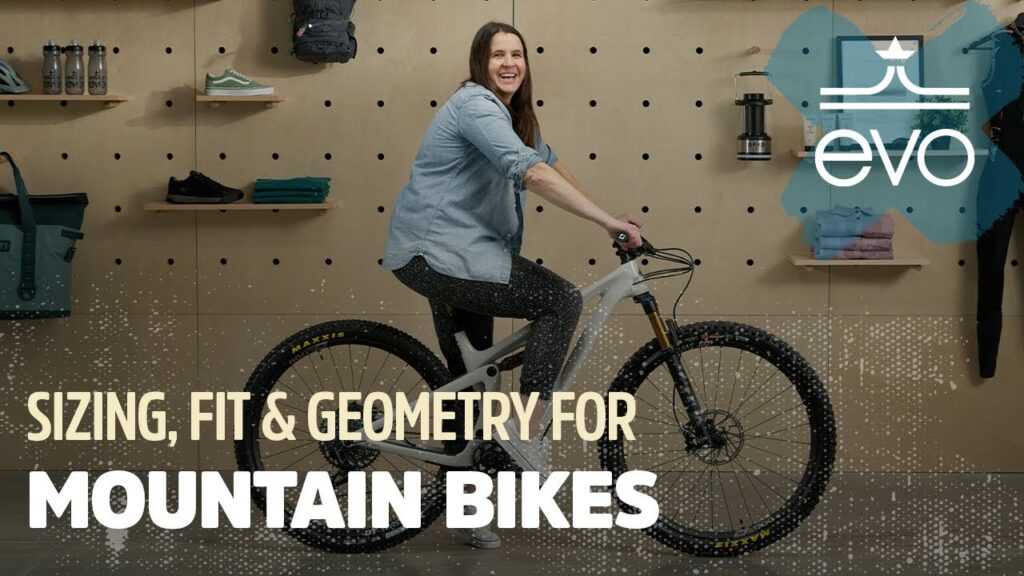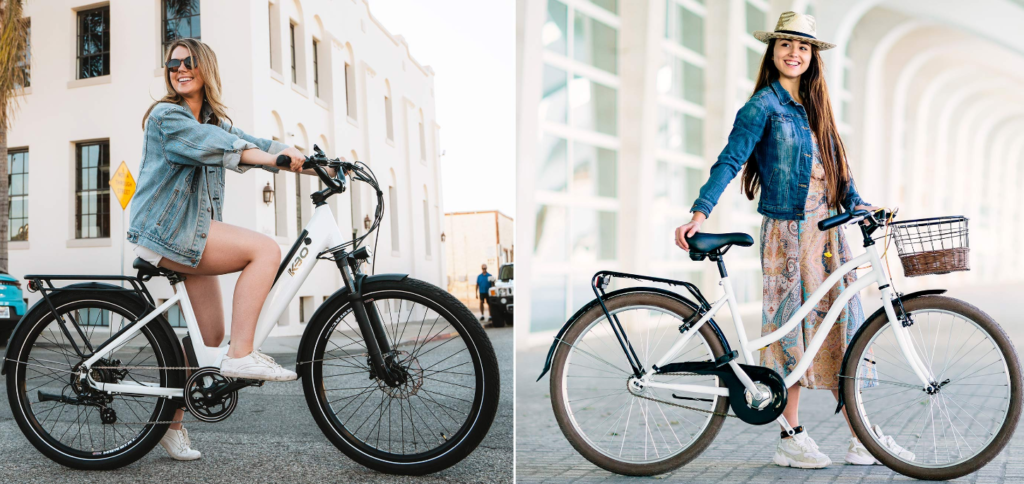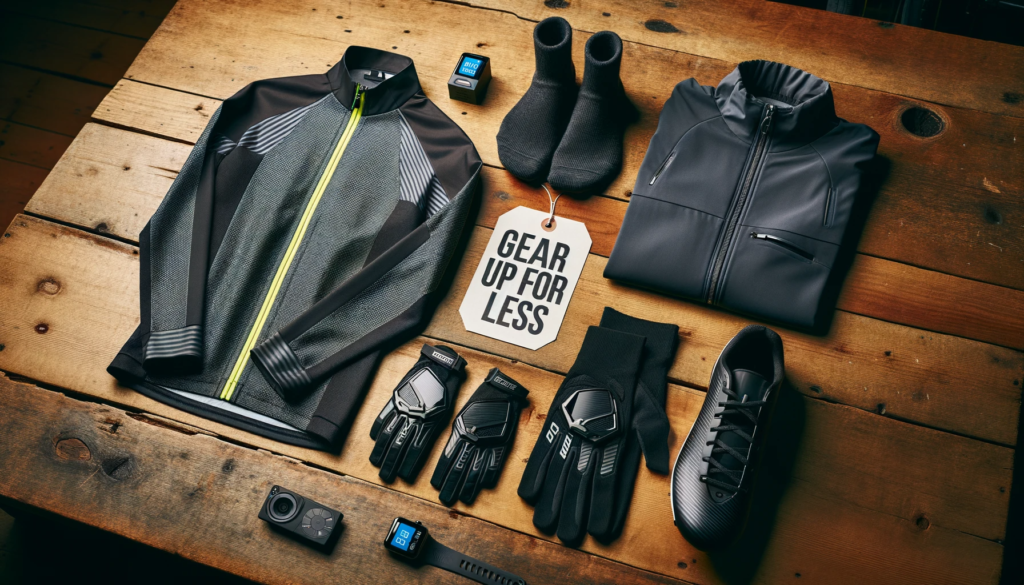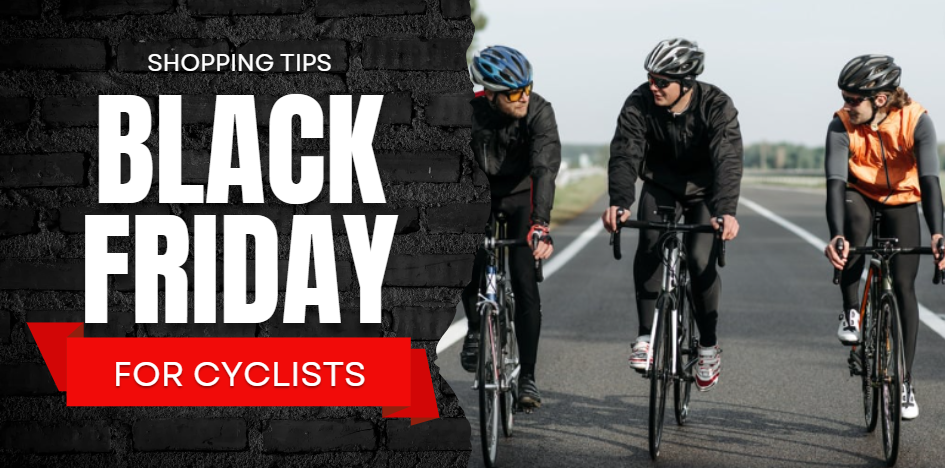Choosing the right mountain bike size is like finding the perfect pair of shoes. It needs to feel just right. A bike that fits well makes rides smoother, more fun, and ensures a better riding experience, minimizing the risk of injury and fatigue.
When it comes to choosing the correct mountain bike size, it’s important to consider your height, leg inseam, and the type of biking you will be doing. A bike that’s too big or too small will feel awkward. Even worse, it can lead to pain, injury, or a loss of control.
But with so many sizes, frame types, and measurements, it can feel overwhelming. Don’t worry! In this ultimate guide to finding the right mountain bike, we’ll break down everything you need to know about mountain bike sizing. Let’s get started.
Why Getting the Right Mountain Bike Size Matters
A mountain bike that’s too big or too small can ruin your ride. Imagine pedaling with your knees hitting the handlebars or struggling to reach the pedals. It’s not fun. The right size improves comfort, control, and performance. Here’s why it’s so important.
Comfort on Long Rides
Riding a bike that fits feels like sitting in your favorite chair. Your body stays relaxed, arms and legs move naturally, even on long trails. A proper fit reduces strain on your back, neck, and knees. You can ride for hours without feeling sore or cramped.
Better Control
A well-sized bike lets you steer and maneuver with ease. If the bike is too big, you might struggle to control it on tight turns or steep descents. If it’s too small, you could feel unstable. The right size keeps you balanced and confident, especially on rough terrain.
Injury Prevention
Riding the wrong size bike can strain your knees, back, wrists, and neck. Small discomforts can turn into serious issues over time. A proper fit keeps your body aligned and protects your joints.
Improved Performance
When your bike fits, you pedal more efficiently. Your legs move in a natural motion, and you waste less energy. This means you can climb hills faster, tackle technical trails, and ride longer without getting tired.
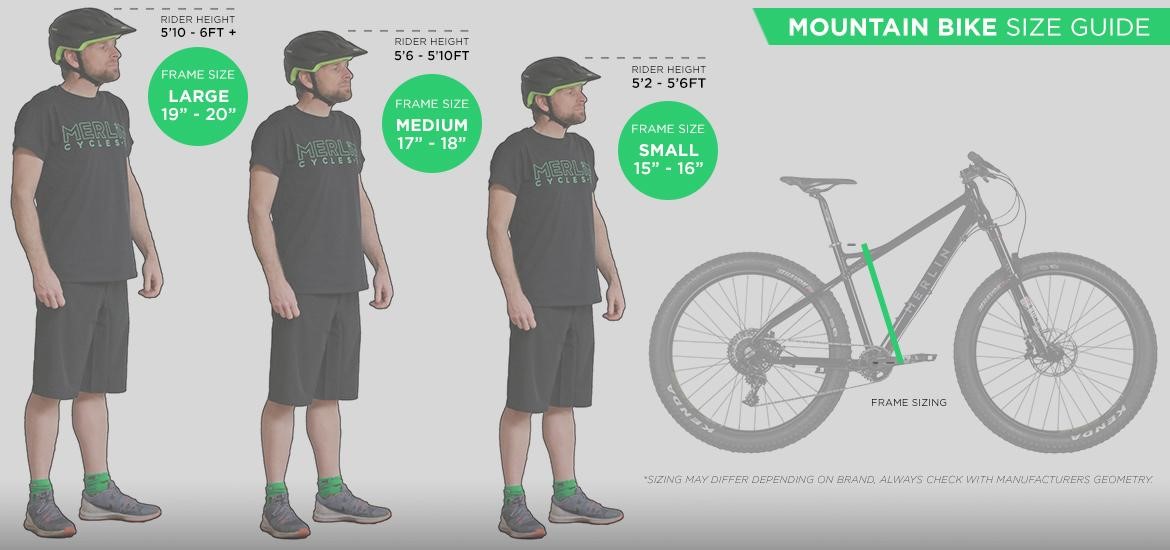
Credit: www.merlincycles.com
Factors To Consider When Determining The Right Mountain Bike Size
Finding the right mountain bike size starts with knowing your body measurements and understanding bike sizing. Let’s walk through the steps.
Step 1: Measure Your Height, Inseam, Arm and Torso Length
Several body measurements affect how your bike should fit. Let’s break them down.
1. Rider Height
This is the starting point. Most bike brands use height as the base for sizing charts. But it’s just a rough guide. Your proportions also matter.
How to measure it:
- Stand straight against a wall.
- Remove shoes.
- Use a tape measure from the floor to the top of your head.
2. Inseam Length
This tells you how high your saddle should be and helps calculate frame size.
How to measure it:
- Stand with your back to a wall.
- Place a book between your legs, snug against your groin.
- Measure from the floor to the top of the book.
3. Arm and Torso Length
Longer arms or a longer torso might mean a larger frame, or at least a longer reach. This is important for upper-body comfort.
Step 2: Understand Frame Size
Mountain bike sizes are usually listed as small, medium, large, or in inches (like 15”, 17”, or 19”). These refer to the frame’s seat tube length, measured from the bottom bracket to the top of the seat tube. However, frame sizes vary slightly between brands. Always check the manufacturer’s size chart.
Here’s a general guide based on height:
| Rider Height | Inseam (inches) | Frame Size (inches) | Frame Size (Label) |
| 4’10” – 5’2” | 24” – 29” | 13” – 14” | X-Small |
| 5’2” – 5’6” | 27” – 30” | 15” – 16” | Small |
| 5’6” – 5’10” | 29” – 31” | 17” – 18” | Medium |
| 5’10” – 6’1” | 30” – 33” | 19” – 20” | Large |
| 6’1” – 6’4” | 32” – 35” | 21” – 22” | X-Large |
| 6’4” and up | 34”+ | 23”+ | XX-Large |
Note: Each brand may vary slightly. Always check the brand-specific chart before buying.
Kids and Women’s Mountain Bike Sizing
Kids
Use the child’s height and inseam to choose bike wheel size (not frame size).
| Child Height | Wheel Size |
| 3’7” – 4’0” | 16” |
| 4’0” – 4’5” | 20” |
| 4’5” – 4’9” | 24” |
| 4’9” and up | 26” – 27.5” |
Women
Women’s bikes often have a shorter top tube, narrower handlebars, and women-specific saddles. Some women prefer unisex bikes with customized parts.
Step 3: Consider Bike Geometry
Frame size is just part of the equation. Bike geometry affects how a bike feels. Geometry includes things like the length of the top tube, the angle of the head tube, and the height of the bottom bracket. These impact how you sit and handle the bike.
- Top Tube Length: This affects how stretched out or upright you feel. A longer top tube suits taller riders or those who like a stretched riding position.
- Standover Height: This is the clearance between you and the top tube when you straddle the bike. There should be at least 1-2 inches of space for mountain bikes.
- Reach and Stack: Reach is the distance from the bottom bracket to the head tube. Stack is the vertical height from the bottom bracket to the top of the head tube. These measurements help you find a bike that matches your arm and torso length.
- Wheelbase: A longer wheelbase makes the bike more stable on descents but less nimble on tight trails.
Check the manufacturer’s geometry chart. Compare it to your measurements to find a bike that feels natural.
Types of Mountain Bikes and Sizing
Not all mountain bikes are the same. Different types are designed for different terrains, and this can affect sizing. Let’s explore the main types.
Cross-Country Bikes
Cross-country bikes are built for speed and climbing. They have lightweight frames and shorter travel suspension (80-120mm). These bikes often have a more stretched-out riding position. If you’re between sizes, go for the smaller one for better agility.
Trail Bikes
Trail bikes are versatile, great for all-around riding. They have moderate suspension (120-150mm). Sizing for trail bikes depends on your riding style. If you prefer climbing, a smaller frame might feel better. For descents, a larger frame offers more stability.
Downhill Bikes
Downhill bikes are built for steep, rough terrain. They have heavy-duty frames and long-travel suspension (180-200mm). These bikes often feel bigger, so you might size down for better control on tight, technical trails.
Enduro Bikes
Enduro bikes balance climbing and descending. They have suspension around 150-170mm. Sizing depends on the terrain you ride most. For aggressive descents, a larger frame can help. For mixed trails, stick with your standard size.
Fine-Tuning Your Bike Fit
Once you’ve got the right frame size, you can tweak the fit for maximum comfort. Small adjustments make a big difference.
Adjust Saddle Height
Your saddle height affects how efficiently you pedal. Here’s how to set it:
- Sit on the bike with the pedals at their lowest point.
- Your knee should have a slight bend (about 25-30 degrees) when the pedal is at the bottom.
- Adjust the seat post up or down to get this position.
A saddle that’s too high can strain your knees. Too low, and you lose power.
Set Saddle Position
The saddle’s fore-aft position affects your balance. Slide it forward or backward so your knees are directly above the pedals when they’re at the 3 o’clock position. This helps you pedal smoothly without straining.
Handlebar Height and Reach
Handlebars should feel comfortable to grip. If they’re too low, you might feel hunched over. Too high, and you could lose control. Adjust the stem height or swap it for a shorter or longer one if needed. Most mountain bikes let you raise or lower the handlebars slightly.
Suspension Setup
Mountain bikes have front (and sometimes rear) suspension. Set the suspension to match your weight and riding style. Check the manufacturer’s guide for recommended settings. Proper suspension makes the bike feel like an extension of your body.

Credit: m.youtube.com
Effects Of Incorrect Bike Size
Riding a bike that does not fit you properly can lead to various negative effects, affecting both your overall experience and performance. Let’s delve into two significant impacts of incorrectly sized mountain bikes – discomfort and pain, as well as the impact on handling and control.
Discomfort And Pain
Riding a mountain bike that is too small or too large for your body can result in discomfort and pain during and after your ride. This occurs because an incorrect bike size can force your body into awkward positions and put excessive stress on certain areas.
- Uneven weight distribution causes excessive pressure points, leading to discomfort in the hands, wrists, and neck.
- Leg extension problems can cause knee pain, either from overextension or excessive bending of the knees.
- Back pain can occur due to poor posture caused by an incorrectly sized frame, leading to strain on your lower back.
These discomforts can significantly hinder your enjoyment of riding and even discourage you from pursuing this thrilling outdoor activity altogether. It is crucial to find the right mountain bike size to minimize the risk of discomfort and pain.
Impact On Handling And Control
When riding a mountain bike, proper handling and control are essential for your safety and riding experience. Incorrect bike size can negatively affect both factors, making it more difficult to maneuver your bike effectively.
- A bike that is too large can result in a stretched-out riding position, making it challenging to react quickly to obstacles or turns.
- With a bike that is too small, you may struggle to maintain stability and balance, especially on rough terrains.
- Handlebar width and bike frame dimensions also play a role; if they are not suitable for your body size, your control and handling can be compromised.
Riding a mountain bike with improper handling and control can increase the risk of accidents and limit your ability to fully enjoy the thrill of mountain biking.
Now that you understand the effects of incorrect bike size, it is clear that finding the perfect fit is essential for a comfortable and enjoyable riding experience. Next, let’s explore how to determine the right size mountain bike that suits your body measurements and riding style.
Common Sizing Mistakes to Avoid
Even with the right measurements, it’s easy to make mistakes. Here are some pitfalls to watch out for.
Ignoring Inseam Length
Focusing only on height can lead to a poor fit. A rider with a short inseam might need a smaller frame, even if they’re tall. Always measure your inseam and compare it to the bike’s standover height (the distance from the ground to the top tube).
Choosing Based on Brand Alone
Every brand sizes bikes differently. A medium from one company might feel like a large from another. Always check the size chart and, if possible, test-ride the bike.
Not Testing the Bike
A bike might look perfect on paper, but riding it tells the real story. Test-ride different sizes to see what feels best. Pay attention to how it handles on climbs, descents, and turns.
Tips for Buying a Mountain Bike
Ready to buy? Here are some practical tips to make sure you get the right size.
- Visit a Local Bike Shop: Bike shops let you test-ride bikes and get expert advice. Staff can measure you and recommend the best size. They can also adjust the bike on the spot to fit your body.
- Check Online Size Calculators: Many bike brands offer online size calculators. Enter your height and inseam, and they’ll suggest a frame size. These tools are a great starting point, but always double-check with a test ride.
- Consider Your Riding Goals: Think about where and how you’ll ride. If you’re hitting technical trails, prioritize control and stability. For casual rides, focus on comfort. Your goals can influence whether you size up or down.
- Budget for Adjustments: Even the perfect frame might need tweaks, like a new stem or saddle. Set aside some money for these adjustments to get the best fit.
Consulting With Experts For A Professional Bike Sizing Session
Consulting with experts for a professional bike sizing session is crucial to ensure that you find the right mountain bike size for your body and riding style. It involves seeking guidance from experienced professionals who can accurately assess your physical measurements and riding preferences, leading to a personalized bike sizing recommendation. This process can significantly enhance your overall riding experience and minimize the risk of discomfort or injury.
Benefits Of Expert Consultation
1. Accurate Sizing: Experts consider your body proportions, flexibility, and riding posture, leading to a precise bike fit.
2. Enhanced Performance: A well-fitted bike can improve your efficiency and comfort, allowing you to maximize your riding capabilities.
3. Injury Prevention: Proper bike sizing reduces the strain on your body, decreasing the likelihood of discomfort and injuries during rides.
Techniques Used For Precise Sizing
- Physical Assessment: Experts evaluate your flexibility, range of motion, and body proportions to identify your ideal bike dimensions.
- Dynamic Fitting Process: This involves observing your riding position on a stationary bike to fine-tune the adjustments for optimal comfort and performance.
- Bike Configuration Recommendations: Professionals provide insights into suitable frame geometries, handlebar widths, and saddle designs based on your unique measurements and riding style.
Sizing Between Two Options? Here’s What to Do
Sometimes you fall between two sizes. Here’s how to decide:
Go Smaller If:
- You want better control and maneuverability.
- You prefer a more upright position.
- You plan to ride technical trails.
Go Larger If:
- You want a stretched-out riding position.
- You ride long distances or race cross-country.
- You have longer limbs or torso.
Adjusting Fit After Buying
Even if the frame size is right, small tweaks can make it perfect.
1. Adjust the Saddle
- Up or down for leg extension.
- Forward or backward to fine-tune reach.
2. Change the Stem
- A shorter stem gives quicker handling.
- A longer stem stretches your position.
3. Handlebar Options
- Riser bars lift your position for more comfort.
- Flat bars give a more aggressive feel.
4. Crank Length
Most bikes come with standard crank arms, but if your legs are shorter or longer, changing crank length can improve comfort and efficiency.
Frequently Asked Questions
Can I Ride a Bike That’s Slightly Too Big or Small?
It’s possible, but not ideal. A slightly wrong size can work with adjustments, but it might affect comfort and control. Always aim for the closest fit and tweak from there.
How Do I Know If My Bike Fits?
Your bike fits if you feel balanced, comfortable, and in control. Your knees shouldn’t hit the handlebars, and you should reach the pedals and grips easily. Test it on different terrains to be sure.
Do Women Need Different Bike Sizes?
Some brands offer women-specific bikes with slightly different geometry, like shorter top tubes or narrower handlebars. However, many women ride standard bikes just fine. Focus on your measurements, not gender-specific labels.
What Is A 29er Bike Good For?
29er bikes are great for handling rough terrain with ease, providing better traction, stability, and smoother rides.
What Size Bike Should A 5’10” Man Ride?
For a 5’10” man, a bike with a frame size of 54-56cm would be suitable. The correct bike size ensures comfortable and efficient riding.
Conclusion
Getting the right mountain bike size is not just about numbers. It’s about how the bike feels when you ride. Use your height and inseam as a guide, but don’t skip the test ride. Pay attention to comfort, balance, and how naturally your body moves with the bike.
If you can’t test the bike in person, use size charts from the manufacturer. And remember, you can always adjust parts like the saddle or handlebars later to get a better fit.
When your bike fits well, every ride becomes easier, safer, and more fun. Take the time to size it right—and the trails will reward you.

